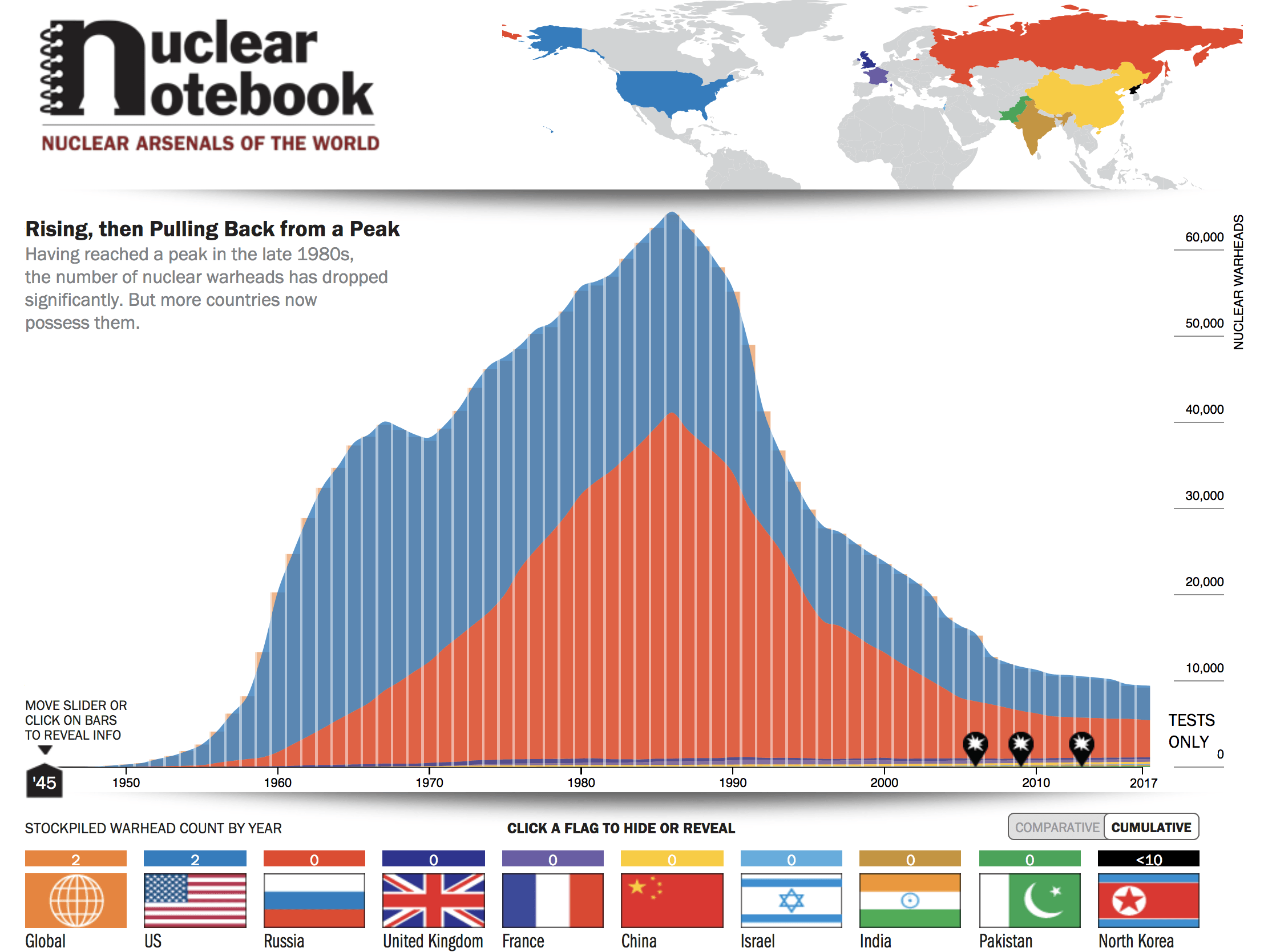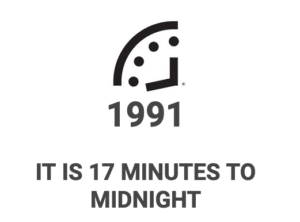10 facts about the Doomsday Clock and nuclear risk
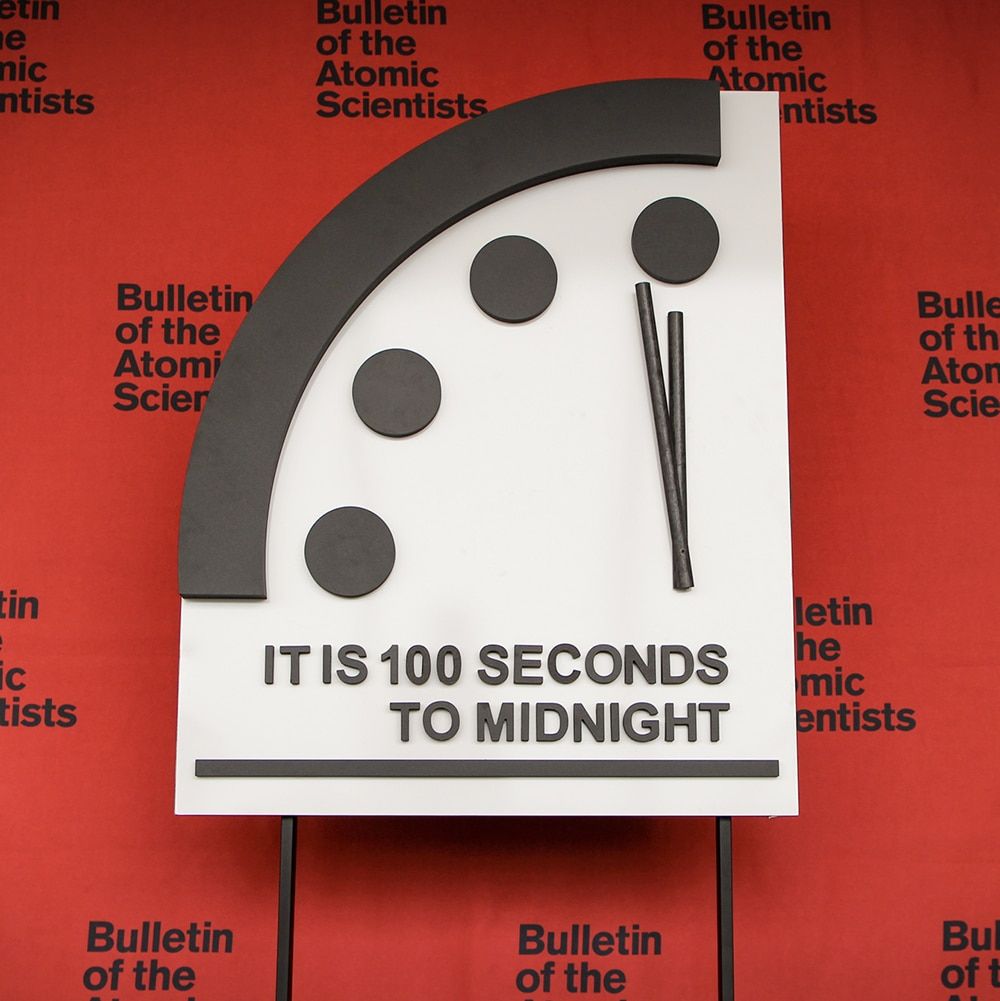
1. Created in 1947, the Doomsday Clock is a symbol for humanity’s proximity to self-destruction. In 2007, the Doomsday Clock began factoring in climate change in addition to nuclear risk.
2. The iconic Doomsday Clock is managed by the Bulletin of the Atomic Scientists, founded in 1945 by Manhattan Project scientists who helped build the world's first nuclear bombs and “could not remain aloof to the consequences of their work.”
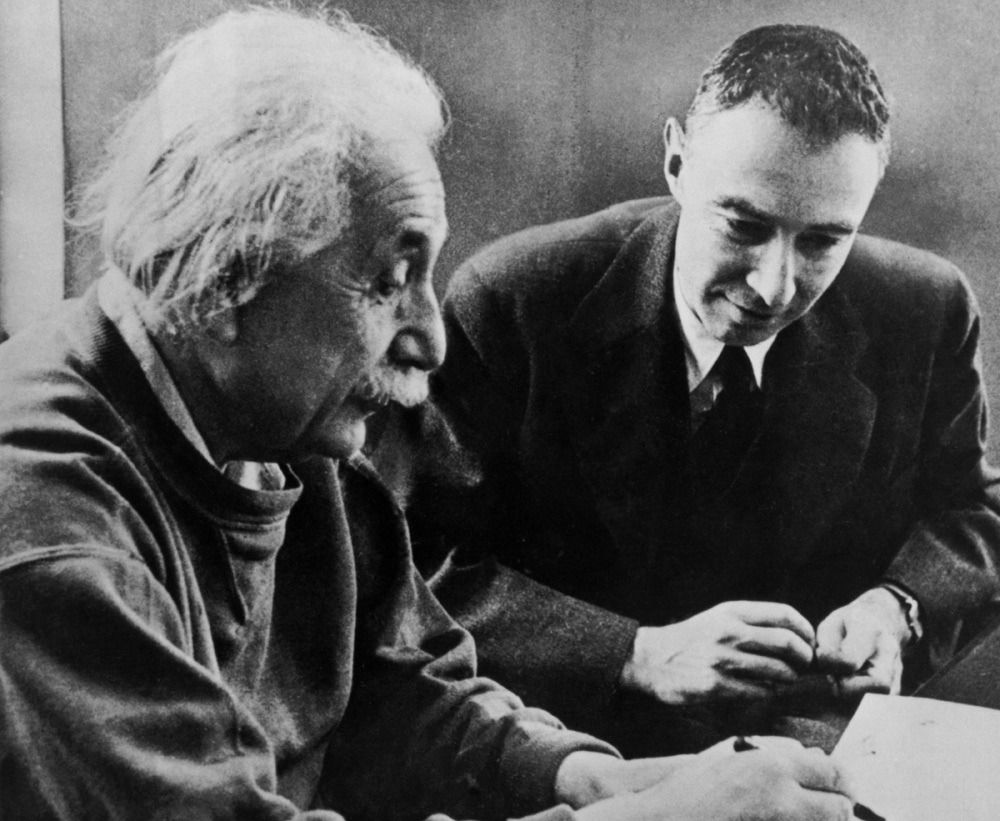
3. Nine nations have nuclear weapons: the United States, Russia, the United Kingdom, France, China, Israel, India, Pakistan, and North Korea. Their arsenals are tracked in the Nuclear Notebook, an authoritative accounting of global nuclear warheads compiled by top experts from the Federation of American Scientists and published in the Bulletin.
4. As of 2022, there are over 12,000 nuclear arms on earth, many of them kept hair trigger alert. It’s been estimated that it would take between ten and one hundred nuclear weapons to destroy humanity.
5. Approximately 90% of the world’s nuclear weapons are controlled by two countries — the United States and Russia.
6. There are no nuclear weapons states in South America, and around 40% of the world's population lives in a nuclear-weapon-free zone. In 1967, the Treaty of Tlatelolco was the first of its kind in banning nuclear weapons.
7. An intentional nuclear strike isn’t the only way nuclear weapons put us at risk. There have been dozens of accidents involving nuclear warheads in the US alone.
8. The furthest the Clock has been from midnight was 17 minutes in 1991. With the end of the Cold War, the United States and the Soviet Union signed the Strategic Arms Reduction Treaty, the first treaty to provide for deep cuts to the two countries’ strategic nuclear weapons arsenals, prompting the Bulletin to set the Clock back.
9. Now is the closest the Clock has ever been to midnight, at 100 seconds, where it has been since January 2020. In their statement announcing the Clock time, the Bulletin Science and Security Board wrote, “The international security situation is dire, not just because these threats exist, but because world leaders have allowed the international political infrastructure for managing them to erode.”
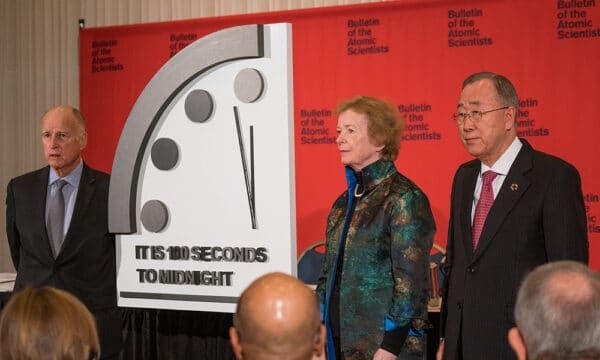
10. Each year, the Bulletin encourages citizens to take action to turn back the Doomsday Clock. We want to hear about what inspires you and how we can work together to save the world. Use the hashtag #TurnBacktheClock on social media to share your ideas on how to make a safer planet.
